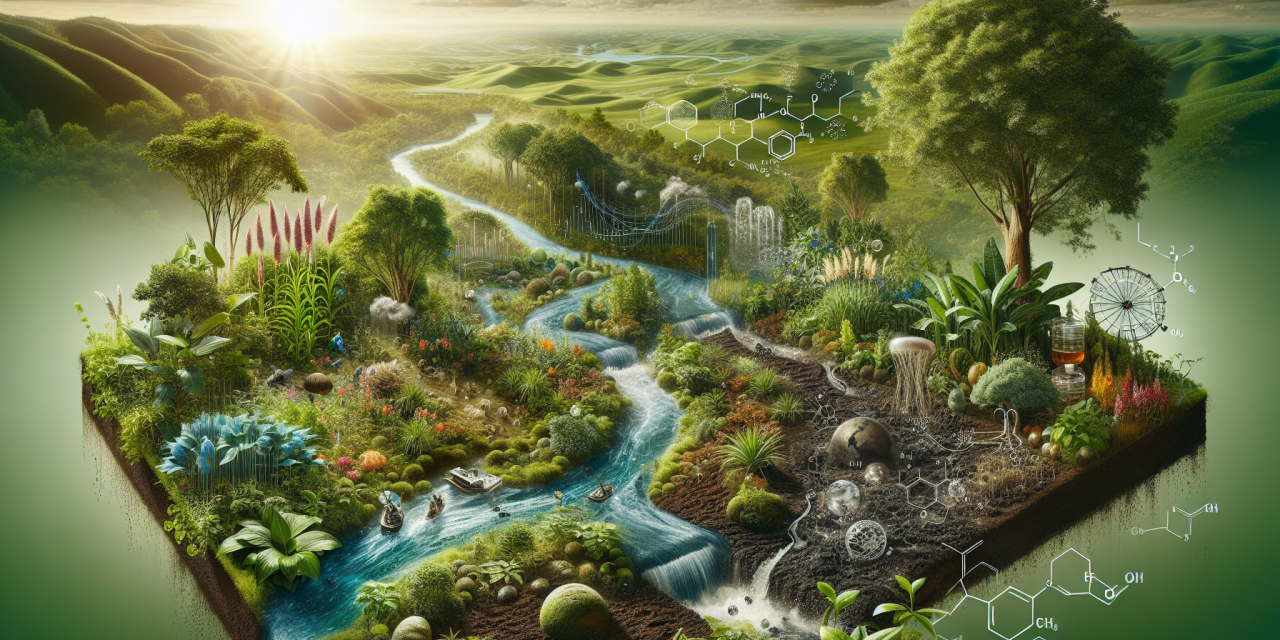Table of Contents
- Introduction
- Why Understanding Soil and Water Chemistry Matters
- Key Concepts in Environmental Soil and Water Chemistry
- Practical Applications of Soil and Water Chemistry
- Exploring Learning Resources
- Frequently Asked Questions
- Conclusion
Introduction
Environmental soil and water chemistry play an essential role in understanding our planet’s ecosystems. By studying how different chemicals behave in soils and water systems, we can uncover crucial insights into agriculture, pollution, and sustainability practices. For anyone passionate about protecting our environment, gaining a solid grasp of these subjects can pave the way to many fulfilling opportunities.
Why Understanding Soil and Water Chemistry Matters
At the core of environmental science, soil and water chemistry provide critical information about the interactions between chemical substances and their environments. This understanding helps explain how nutrients, contaminants, and natural processes affect the quality of our soil and water resources. Let us look at a few reasons why delving into these topics is invaluable:
The Role of Soil and Water in Ecosystems
Soil acts as a habitat for numerous organisms, while water serves as a life source for all living beings. Both of these elements are interconnected, contributing to the health of ecosystems. By examining chemical interactions, we can determine how to sustain these vital resources and restore degraded environments.
Impact on Agriculture
Farming practices greatly influence soil and water quality. Understanding the chemistry involved allows farmers to utilize fertilizers and pesticides more efficiently, ensuring that crops receive the nutrients they need while minimizing environmental damage. Conversely, a lack of knowledge can lead to soil acidification, salinization, and water contamination.
Addressing Pollution Challenges
Pollution poses significant threats to ecosystems and human health alike. By analyzing chemical composition in soil and water, scientists can identify the sources of pollution, assess its effects, and develop strategies to remediate contaminated areas. These efforts are crucial for maintaining clean water supplies and safe land use.
Key Concepts in Environmental Soil and Water Chemistry
To better understand soil and water chemistry, consider exploring the following key concepts that form the foundation of this field:
Basic Chemical Principles
Have you ever wondered how soil composition impacts plant growth? Soil primarily contains mineral particles, organic matter, air, and water. Each of these components interacts chemically to influence nutrient availability. For instance, how soil pH affects nutrient solubility significantly impacts how well plants can access essential elements.
Nutrient Cycles
Nutrient cycles, such as the nitrogen and phosphorus cycles, represent how these vital elements move through the ecosystem. Understanding these cycles enables scientists to develop better management practices for agricultural land, ensuring that crops receive ample nutrients without overloading water bodies with runoff.
Contaminant Behavior
When heavy metals or organic pollutants enter soil and water systems, understanding their behavior becomes crucial. Chemical properties dictate how these contaminants interact with their surroundings and vary in their toxicity. By studying these behaviors, we can develop effective methods to limit or eliminate harmful effects.
Water Quality Assessment
Monitoring water quality involves measuring various chemical parameters, such as pH, dissolved oxygen, turbidity, and the presence of specific contaminants. Regular assessment enables communities and industries to address potential issues, safeguarding water resources for future generations.
Practical Applications of Soil and Water Chemistry
Now that we’ve touched upon important concepts, let’s explore how soil and water chemistry can be applied in real-world scenarios:
Agricultural Practices
Farmers implement environmental soil and water chemistry principles daily. They assess soil health using soil tests to guide fertilization and cropping decisions. This proactive approach enhances crop yields while protecting water quality by preventing nutrient runoff.
Environmental Remediation
Remediation technologies utilize soil and water chemistry to clean up contaminated sites. By using chemical or biological processes, harmful substances can be broken down or removed, restoring the health of ecosystems. This practice is crucial in mitigating the impacts of industrial activities on land and waterways.
Sustainable Land Use Planning
Cities and communities aim to manage land sustainably by incorporating principles of soil and water chemistry. Wise land-use planning minimizes erosion, prevents contamination, and ensures that water supplies remain clean and abundant. Environmental assessments often guide these efforts.
Exploring Learning Resources
To dive deeper into the principles and practices of environmental soil and water chemistry, an excellent resource is the Environmental Soil and Water Chemistry Fundamentals Course. This program offers comprehensive insights and hands-on applications that enhance understanding. Furthermore, other resources include:
- Getting a grasp of Chemical Engineering essentials
- Books and journals focusing on soil science and environmental chemistry
- Online forums and communities dedicated to environmental science discussions
Frequently Asked Questions
What is the importance of soil chemistry in agriculture?
Soil chemistry provides vital information about nutrient availability and environmental health. By understanding soil composition and chemical reactions, farmers optimize crop growth while minimizing negative impacts on ecosystems.
How do pollutants affect water quality?
Pollutants can significantly compromise water quality, leading to toxic effects on aquatic life and human health. Understanding the chemical behavior of contaminants allows for effective management and remediation strategies.
Conclusion
In summarizing the importance of environmental soil and water chemistry, we recognize its profound impact on agriculture, pollution management, and ecosystem health. By mastering the fundamental principles and practical applications, individuals can contribute to sustainable practices and work towards a healthier environment. Whether through formal education or self-study, embracing the complexities of soil and water chemistry offers a rewarding journey in understanding and preserving our planet.





